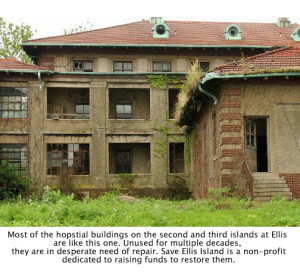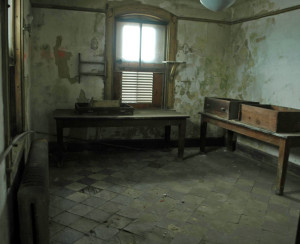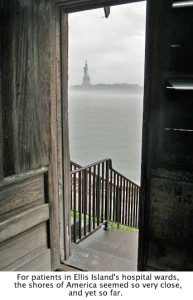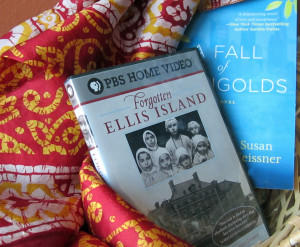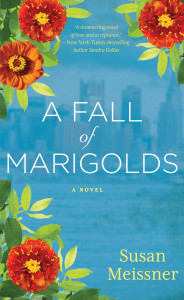 Today, I’m participating in a blog tour for a new book by award-winning novelist Susan Meissner who’s here with me today to talk about her newest book from Penguin NAL. A Fall of Marigolds is a part historical novel, part contemporary novel set on Ellis Island in 1911 and in Manhattan a hundred years later. Make sure you read to the end of the post so that you can find out how to get in on a drawing for a fabulous gift basket that includes a $100 Visa gift card.
Today, I’m participating in a blog tour for a new book by award-winning novelist Susan Meissner who’s here with me today to talk about her newest book from Penguin NAL. A Fall of Marigolds is a part historical novel, part contemporary novel set on Ellis Island in 1911 and in Manhattan a hundred years later. Make sure you read to the end of the post so that you can find out how to get in on a drawing for a fabulous gift basket that includes a $100 Visa gift card.
Susan Meissner is the multi-published author of fifteen books, including The Shape of Mercy, named one of the 100 Best Novels in 2008 by Publishers Weekly and the ECPA’s Fiction Book of the Year. She is also a speaker and writing workshop leader with a background in community journalism. She and her husband make their home in Southern California.
1. Susan, tell us where the idea for A Fall of Marigolds came from.
I’ve long been a history junkie, especially with regard to historical events that involve ordinary people facing extraordinary circumstances. A couple years ago I viewed a documentary by author and filmmaker Lorie Conway called Forgotten Ellis Island; a hauntingly poignant exposé on the section of Ellis Island no one really has heard much about; its hospital. The two man-made islands that make up the hospital buildings haven’t been used in decades and are falling into ruins, a sad predicament the documentary aptly addresses. The documentary’s images of the rooms where the sick of a hundred nations waited to be made well stayed with me. I knew there were a thousand stories pressed into those walls of immigrants who were just a stone’s throw from a new life in America. They were so close they could almost taste it. But unless they could be cured of whatever disease they’d arrived with, they would never set foot on her shores. Ellis Island hospital was the ultimate in-between place – it lay between what was and what could be. A great place to set a story.
Here are a couple of photos from the current state of the Ellis Island hospital, and views from the island.
2.What is the story about, in a nutshell?
The book is about two women who never meet as they are separated by a century. One woman, Taryn, is a 9/11 widow and single mother who is about to mark the tenth anniversary of her husband’s passing. The other is a nurse, Clara, who witnessed the tragic death of the man she loved in the Triangle Shirtwaist Fire in Manhattan in 1911.In her sorrow, Clara imposes on herself an exile of sorts; she takes a post at the hospital on Ellis Island so that she can hover in an in-between place while she wrestles with her grief. She meets an immigrant who wears the scarf of the wife he lost crossing the Atlantic, a scarf patterned in marigolds. The scarf becomes emblematic of the beauty and risk inherent in loving people, and it eventually finds it way to Taryn one hundred years later on the morning a plane crashes into the North Tower of the World Trade Center. The story is about the resiliency of love, and the notion that the weight of the world is made more bearable because of it, even though it exposes us to the risk of loss.
3. Why a scarf of marigolds? What is their significance?
Marigolds aren’t like most other flowers. They aren’t beautiful and fragrant. You don’t see them in bridal bouquets or prom corsages or funeral sprays. They don’t come in gentle colors like pink and lavender and baby blue. Marigolds are hearty, pungent and brassy. They are able to bloom in the autumn months, well past the point when many other flowers can’t. In that respect, I see marigolds as being symbolic of the strength of the human spirit to risk loving again after loss. Because, face it. We live in a messy world. Yet it’s the only one we’ve got. We either love here or we don’t. The title of the book has a sort of double-meaning. Both the historical and contemporary story take place primarily in the autumn. Secondarily, when Clara sees the scarf for the first time, dangling from an immigrant’s shoulders as he enters the hospital building, she sees the floral pattern in the threads, notes how similar they are to the flames she saw in the fire that changed everything for her, and she describes the cascading blooms woven into the scarf as “a fall of marigolds.”
4. What led you to dovetail the Triangle Shirtwaist Fire of 1911 with 9/11?
When I first began pulling at story threads, my first instinct was to tell a story about an immigrant struggling to remain hopeful as an unwilling patient at Ellis Island hospital. But the more I toyed with whose story this was, the more I saw instead a young nurse, posting herself to a place where every disease known and unknown showed up. It was a place like no other; a waiting place – a place where the dozens of languages spoken added to the unnatural homelessness of it. Why was she here? Why did she choose this post? Why did she refuse to get on the ferry on Saturday nights to reconnect with the real world? What kind of person would send herself to Ellis not just to work, but to live? Someone who needed a place to hover suspended. I knew something catastrophic had to happen to her to make her run to Ellis for cover. As I began researching possible scenarios, I came across the Triangle Shirtwaist Fire, which up until 9/11 was arguably the worst urban disaster to befall Manhattan. There were similarities between that fire and 9/11, including the tragic fact that many trapped workers jumped to their deaths rather than perish in the flames. For every person lost in disasters such as these, there is always his or her individual story, and the stories of those who loved them. I wanted to imagine two of those stories.
5. One important plot element is the moral dilemma Clara faces when she discovers something about the dead immigrant’s wife that he does not know. What led you to include this story thread?
A good story has to have tension; there has to be some kind of force tightening the screws, forcing the characters to react and respond. The main character of any novel wants something and the tension increases whenever what she wants eludes her. Clara is desperate to keep love golden, perfect in her mind, and without sharp edges. This moral dilemma I impose on her forces her to truly ponder what she thinks she wants. Is love really at its grandest when there are no sharp edges to it all? I don’t think so. I think to love at its fullest means we might get hurt. Probably will. But that doesn’t mean it’s not worth sharing, giving, and having. I include a line in the book that sums it up for me. “Love was both the softest edge and the sharpest edge of what made life real.” I think if we’re honest with ourselves we don’t want to settle for love being just as safe as “like.” Clara wrestles with what to do with her knowledge because she doesn’t want the beauty of love to somehow be tarnished; even it’s tarnished by truth.
6. Your last few novels have had historical components interwoven within a contemporary story. Why do you prefer that kind of story construction?
I think living in Europe for five years awakened my love for history. It’s like it was always there but my time spent overseas just woke it up. When I think back to the subjects I did well in and that came easy to me in high school and college, it was always English and history, never math or science. I appreciate the artistry of math and the complexity of science, but neither subject comes easy to me. History has the word “story” in it. That’s what it is. It’s the story of everyone and everything. How could I not love it? Study history and you learn very quickly what we value as people; what we love, what we fear, what we hate, what we are willing die for. History shows us where we’ve been and usually has lessons for us to help us chart where we’re going.
7. Are you working on anything new at the moment?
My next book is set entirely in England, mostly during The London Blitz. My main character starts out as a young, aspiring bridal gown designer evacuated to the countryside with her seven-year-old sister in the summer of 1940. Though only fifteen, Emmy is on the eve of being made an apprentice to a renowned costumer and she resents her single mother’s decision to send her away. She sneaks back to London – with her sister in tow – several months later but the two become separated when the Luftwaffe begins its terrible and deadly attack on the East End on the first night of the Blitz. War has a way of separating from us what we most value, and often shows how little we realized that value. I have always found the evacuation of London’s children to the countryside – some for the entire duration of the war – utterly compelling. How hard it must have been for those parents and their children. I went on a research trip to the U.K. in the fall of 2013 and I spoke with many individuals who were children during the war; some were separated from their parents, some were bombed out of their homes, some slept night after night in underground Tube stations, some watched in fascination as children from the city came to their towns and villages to live with them. This book explores issues of loss and longing, but also the bonds of sisters, and always, the power of love.
8. Where can readers connect with you?
You can find me at www.susanmeissner.com and on Facebook at my Author page, Susan .Meissner, and on Twitter at SusanMeissner. I blog at susanmeissner.com. I also send out a newsletter via email four times a year. You can sign up for it on my website. I love connecting with readers! You are the reason I write. 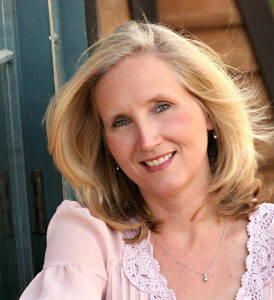
Additional questions
This is your first general market novel after having written more than a dozen books for the inspirational market. Why the switch?
I got my start in the inspirational market and am immensely grateful for that experience. Every published novelist wants to connect with her ideal reader. We don’t all like the same genres and we don’t all like the same style and voice. I believe a great many of my ideal readers shop in the general marketplace because that’s where I shop. My favorite authors — among them Kate Morton, Geraldine Brooks, Lisa See, Jamie Ford, and Diane Setterfield — are all general marketplace authors. Add to this that my faith threads are always subtle rather than obvious, then the move to the general market place seems like a great way for me to connect with more readers. My approach to faith in my writing is one that I liken to the subtlety of God’s presence and influence in the Book of Esther in the Old Testament. The faith thread in the Book of Esther is as subtle as it can be – God is never even mentioned – and yet the story is powerfully told and the virtues of loyalty, trust, hope, and courage are obvious. I have never thought of myself as writer of Christian fiction but rather a Christian who writes fiction.
What will readers already familiar with your style find different about A Fall of Marigolds?
I would say any difference between my last book and this one is minimal. The takeaway of A Fall of Marigolds is heavily influenced by the idea of sacrificial love – as great a theme as any – as well as the decision we all must make as to whether we believe all of life is random or that there is purpose and design and therefore a Designer. I have never thought of my books as inspirational in nature, even when I was first starting out. I have not sought to point people to my theological positions or anyone else’s. I merely and only want to tell stories that compel my readers to ponder anew what they love, fear, or long for; what they are willing to die for, live for, hope for. I don’t put messages in my books. At least I never want any book of mine to sound like it is message-driven. But I do want my books to make you want to sit down and talk bout the story with someone.
My review:
I finished A Fall of Marigolds in an airport, and had to hope that no one noticed my tears. By no means is the book a melancholy tale, but it did take me back to some of the emotion from the events and aftermath of September 11, 2001. To me, that was the payoff of the book. What would you do, or say, if you knew that you were likely living through your last moments with someone you love?
At the same time, the story is about that in-between place, where we are sometimes content to stay, and cannot move on from, although we know we should. I found myself getting frustrated with Clara a few times (and so that I don’t give away anything from the story, I won’t say more about those circumstances here), but I still wanted her to be happy.
The story in A Fall Of Marigolds was also decidedly more Clara’s than Taryn’s than I thought it would be from the book’s beginnings. While that didn’t diminish from the story- indeed, I felt transported back to the early twentieth century and learned a lot from the insight into immigrants’ first arrival in this country- it did make me want to know more about Taryn, and her thoughts and life. However, the end of the book gave me that payoff I was wanting.
I really enjoyed reading A Fall of Marigolds and it impacted me in an emotional way that I didn’t anticipate. I want to read more from Susan Meissner.
As part of the release of A Fall of Marigolds and this blog tour, Susan is giving to one lucky winner a gift basket that includes a $100 Visa gift card, a copy of the book, the DVD Forgotten Ellis Island, and a beautiful re-purposed infinity scarf patterned in marigolds and made from a vintage Indian sari. To be eligible, just leave a comment here between today and midnight Eastern on Friday, February 21. If you would like to see a list of the other participating blogs on this tour, just click here. Feel free to visit those blogs and increase your chances of winning by posting one comment on those blogs as well. One comment per blog will be eligible.
Additionally, there will be one winner of a signed copy of A Fall of Marigolds from among those who comment on this blog. Just leave a comment by Friday, Feb. 21 and you’re in the running for the grand prize as well as a signed copy of the book. Good luck!
- Tags: Blog Tour, fiction, susan meissner
